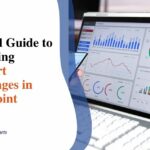How Storytelling with Data Works

Data analysis has become an essential part of businesses and organizations. It helps them to make informed decisions and identify patterns that can drive growth. However, raw data can be overwhelming, and it’s not always easy to understand it. That’s where storytelling with data comes in. It is a powerful technique that can help businesses to make sense of complex data and communicate it in a way that is understandable for everyone.
What is Storytelling with Data?
Storytelling with data is the art and science of using data to tell a story. It involves transforming data into a narrative that can convey a message or idea. The goal is to make data more accessible and understandable for the audience.
The process of storytelling with data involves several steps. The first step is to identify the audience and what message you want to convey. You need to understand who your audience is and what they care about. Once you have identified your audience, you need to collect the data and analyze it. Data analysis involves identifying patterns and trends in the data.
The next step is to create a narrative. This involves structuring the data in a way that tells a story. You need to decide what data to include, what to leave out, and how to present it. The narrative should be engaging and easy to follow. The final step is to present the data in a way that is visually appealing and easy to understand.
Why is Storytelling with Data Important?
Storytelling with data is important because it helps businesses to make better decisions. It allows them to communicate complex information to stakeholders in a way that is understandable and engaging. It also helps to build trust and credibility with stakeholders.
Storytelling with data is also crucial for data-driven decision-making. Without a clear narrative, data can be misinterpreted or ignored. A well-crafted story can help to highlight the most important insights and drive action.
Storytelling with data has emerged as a vital skill that goes beyond just presenting facts and figures. It is the art of transforming raw data into a captivating narrative that not only informs but also engages and inspires. By harnessing the power of storytelling, individuals and organizations can effectively communicate complex information, make data-driven decisions, and drive meaningful change. Here’s why storytelling with data is more important than ever:
- Making data relatable and memorable: Data alone can be overwhelming and challenging to grasp. However, when data is woven into a compelling story, it becomes relatable and memorable. By presenting data in a narrative format, it resonates with the audience, allowing them to connect emotionally and intellectually with the information being presented. Stories have the power to transform numbers into insights, enabling individuals to understand and remember key messages more effectively.
- Communicating complex concepts: Data often involves complex concepts and intricate relationships. Storytelling provides a framework to simplify and convey these ideas in a more accessible manner. By breaking down complex information into digestible narratives, storytellers can bridge the gap between experts and non-experts, ensuring that everyone can comprehend and appreciate the significance of the data. This enhances collaboration, fosters better decision-making, and encourages a more inclusive approach to data interpretation.
- Engaging and persuading audiences: Traditional data presentations tend to be dry and uninspiring, resulting in disengaged audiences. Storytelling with data, on the other hand, captivates listeners and holds their attention. By crafting a narrative arc, incorporating anecdotes, and using visualizations effectively, storytellers can create a compelling experience that keeps the audience engaged throughout. This heightened engagement increases the likelihood of message retention and influences decision-making, as individuals are more likely to act upon information that resonates with them on an emotional level.
- Driving data-driven decision-making: In today’s data-driven age, making informed decisions based on accurate information is crucial for success. Storytelling with data enables decision-makers to contextualize and analyze data effectively, leading to more informed and confident choices. By presenting data within a narrative framework, decision-makers can better understand the implications, uncover patterns, and identify trends that inform their strategic direction. This empowers individuals and organizations to leverage data as a valuable asset in problem-solving and achieving their goals.
- Inspiring action and driving change: Data alone may not be enough to motivate action or bring about change. By incorporating storytelling techniques, data can be used to inspire and drive transformation. Stories have the power to evoke emotions, create empathy, and influence behavior. When data is woven into a compelling narrative, it can generate a sense of urgency, mobilize stakeholders, and inspire collective action toward a common goal. By harnessing the persuasive nature of storytelling, individuals and organizations can catalyze positive change and make a lasting impact.
How to Tell a Story with Data?
Telling a story with data involves several steps. Here are some tips to help you get started:
Step 1: Define your Audience and Objective
The first step is to define your audience and objective. Who are you trying to communicate with, and what message do you want to convey? Understanding your audience is critical to crafting an effective narrative.
Step 2: Collect and Analyze your Data
The next step is to collect and analyze your data. This involves gathering relevant data and analyzing it to identify patterns and insights. Make sure to clean your data and remove any outliers or irrelevant information.
Step 3: Craft your Narrative
Once you have analyzed your data, it’s time to craft your narrative. A good narrative should have a clear structure and flow. Start with an introduction that sets the context. Then, move into the body of the story, where you present your insights and findings. Finally, conclude with a call to action or a recommendation.
Step 4: Visualize your Data
Visualizing your data is crucial to making it more accessible and engaging. Use charts, graphs, and other visual aids to help tell your story. Make sure to choose the right type of visualization for your data and audience.
Best Practices for Storytelling with Data
Here are some best practices for storytelling with data:
Keep it Simple
One of the most critical aspects of storytelling with data is to keep it simple. Avoid using jargon or technical terms that your audience may not understand. Use simple language and visuals to communicate your message effectively.
Use Data Visualization
Data visualization is an essential aspect of storytelling with data. Use charts, graphs, and other visual aids to help communicate your message. Make sure to choose the right type of visualization for your data and audience.
Provide Context
Data can be misleading if not presented in context. Make sure to provide enough context for your audience to understand the story behind the data. This will help to ensure that your insights and recommendations are well-grounded and actionable.
Practice Consistency
Consistency is key when it comes to storytelling with data. Use the same colors, fonts, and styles throughout your narrative to ensure that it feels cohesive and professional.
Conclusion
In conclusion, storytelling with data is an essential skill for businesses and organizations. It helps to make data more accessible and understandable for stakeholders. The process involves identifying the audience, collecting and analyzing data, crafting a narrative, and visualizing the data. By following best practices such as keeping it simple, using data visualization, providing context, and practicing consistency, you can create a compelling story that drives decision-making and action.







